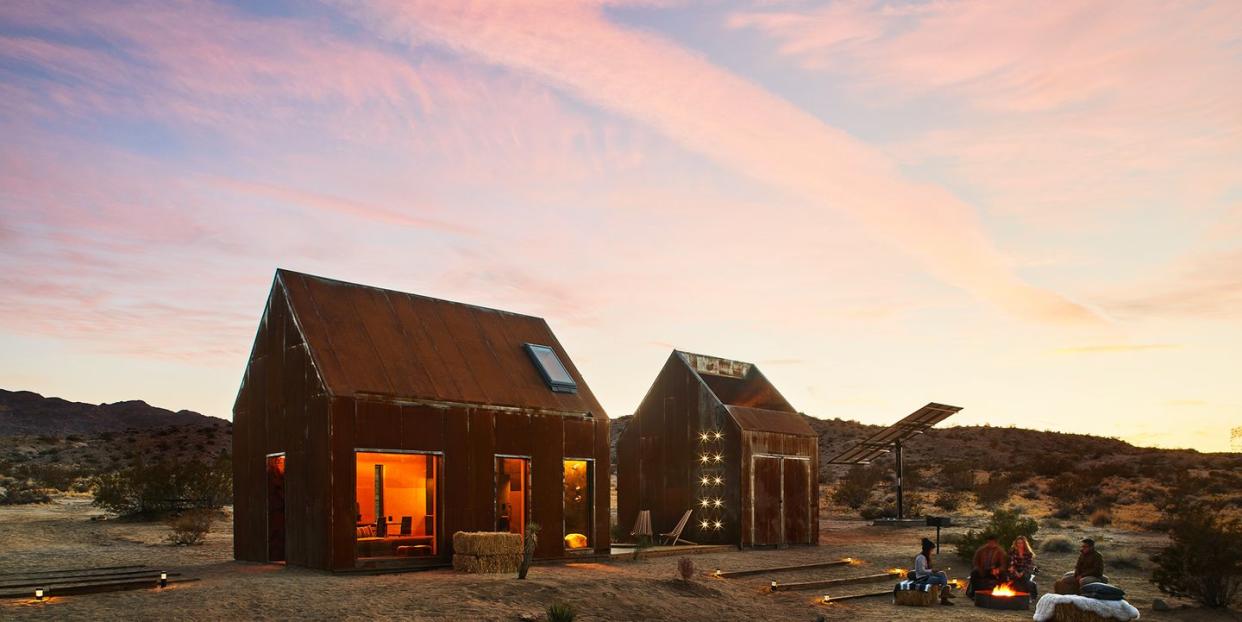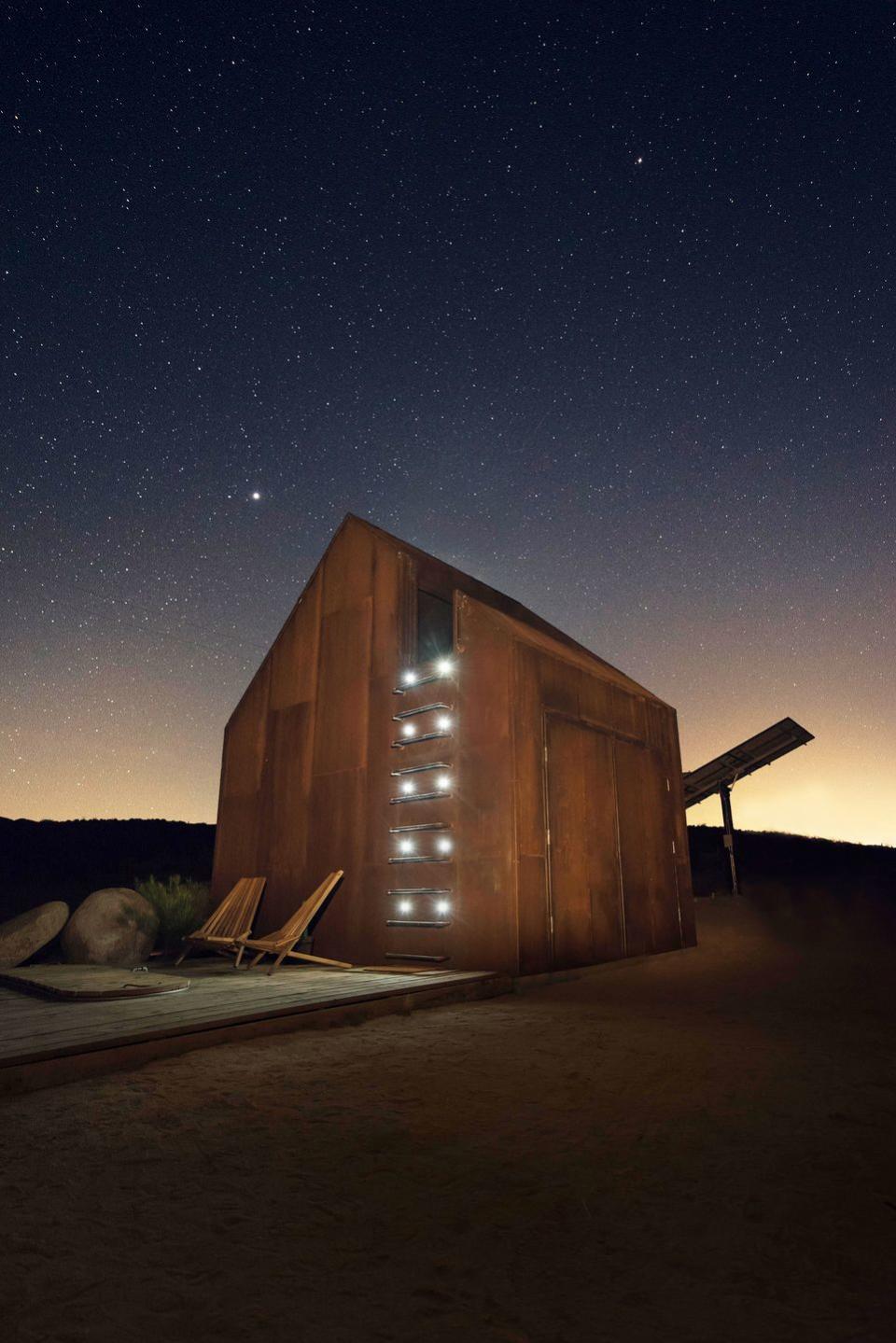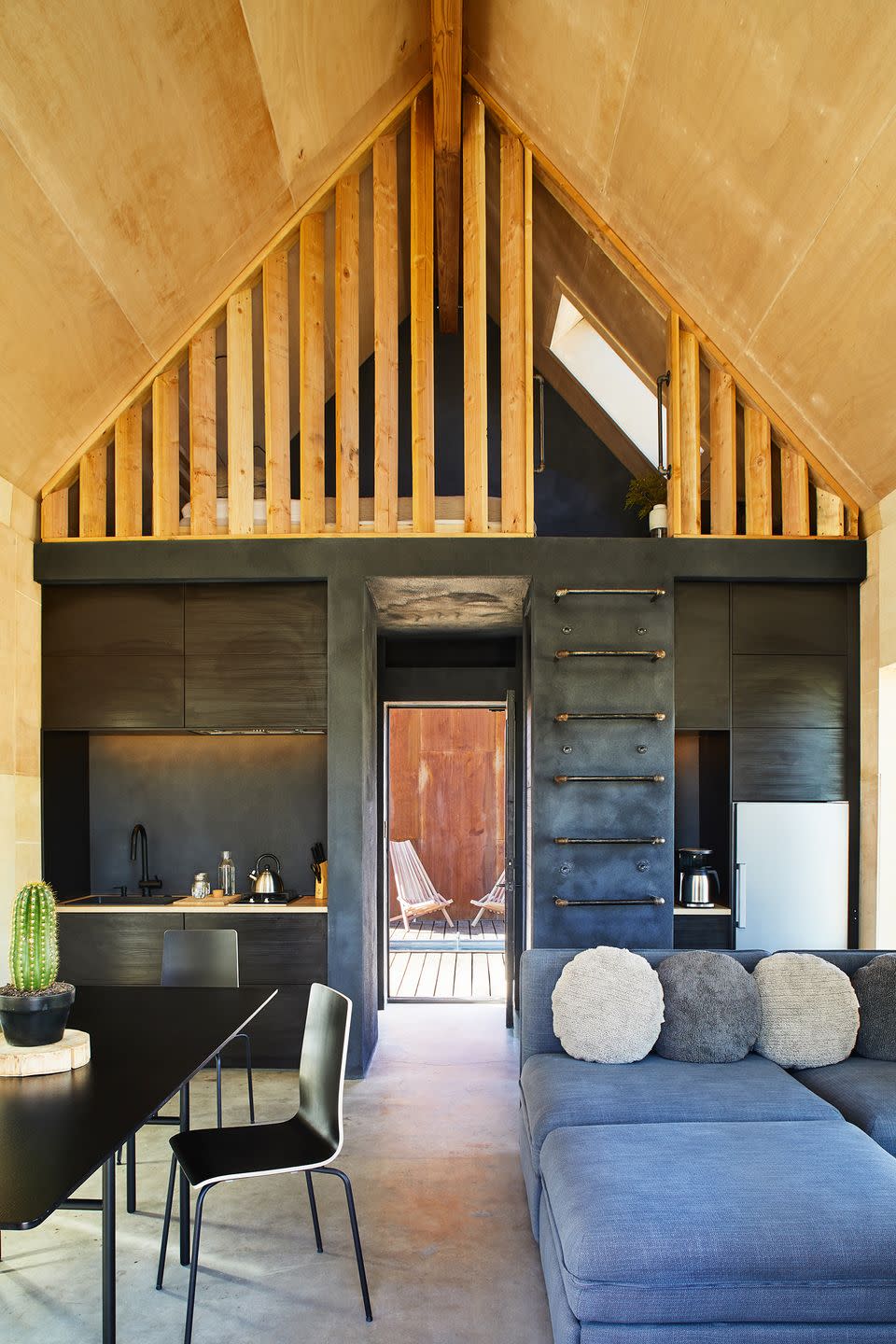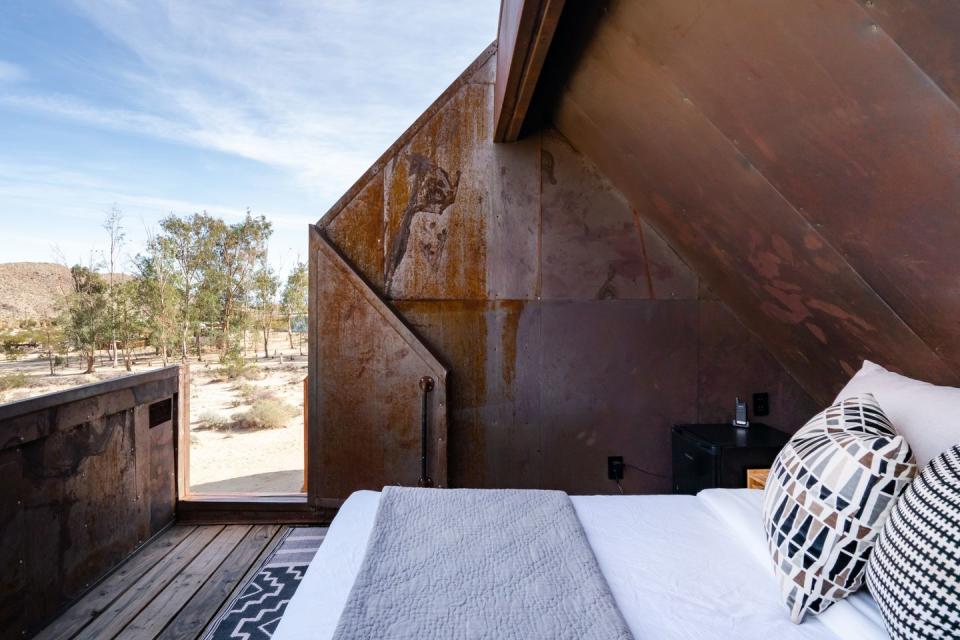This Striking Joshua Tree Airbnb NEEDS to be on Your Travel Bucket List, Period

Visiting Joshua Tree is like leaving planet earth and landing in a magical realm. The otherworldly rocks evoke prehistoric wonder, the cotton candy sunsets are so beautiful you can't help but feel tender, and the soothing desert sounds and sheer vastness of the sky stretching on and on begets an inner stillness and slows you down. It just ignites a full sensory awakening. Can you tell I'm from California, and in deep, true love with its landscape?

And it all may sound a bit dramatic, but I'm not the only fangirl. Tons of forward thinking creators, artists, and designers have found inspiration here, making it an even more beguiling destination. In fact, many of the coolest, most special spots here (aside from the national park itself), are actually Airbnbs. As a design editor, my favorite is Folly Collection.
When I first saw it in my Instagram feed last fall, I was stunned—Folly instantly skyrocketed to the number one spot on my travel-meets-design bucket list, past all the five-star resorts and top international boutique hotels. There's just something about its easy, accessible style, gentle grit, and palpable sense of place... And I had the pleasure of speaking with Malek Alqadi of Cohesion Studio, the innovative architect and designer behind Folly Collection. Read through our conversation below.

House Beautiful: Was there a specific objective guiding your design process?
Malek Alqadi: Folly is a peculiar prototype built to serve as a conversation piece and lend interest to its surroundings through an architectural medium. It explores the integration of buildings within their environments.
HB: How did the preexisting space play a role in the current architectural design?
MK: [The current structure] is an exaggeration of what once stood in the midst of a rare desert landscape. Folly takes the place of a 1950s homestead on this 2.5 acre Joshua Tree site. Folly addressed these multi-layered issues through its components and the method of adaptive reuse and its adherence to contextual, environmental, and social paradigms. Its structure is grafted, stitched and grid tied onto the existing homestead and its footprint.
HB: How did you play within that existing footprint?
MK: The roof is vertically stretched to maximize space and volume, setting up a framed outdoor program that fills the void between the two structures. The ceiling extrusion is not just a visual trick to maximize space; it also allows hot air to rise and vent through the solar powered skylights.

Folly encourages you to disconnect from the norm, the expected, and provokes you to connect with the surroundings. I perceived it as a design paradigm, a small space with a big experience, modern and innovative while grounded within its environment.
HB: How does the design reference the environmental backdrop?
MK: The locally-milled plywood interior contrasts with Folly’s environmentally responsive iron-ox steel exterior against the parched air of the high desert. The concept of a "folly" has for centuries referred to a frivolous structure. However, we millennials are transforming this concept into a conviction to drive visitors towards an impactful off-grid, sustainable experience, one structure at a time.

HB: What does Folly say about the destination and travel experience in general?
MK: A stargazing bedroom with no ceiling, showers with exposed and expansive views, and an energy producing solar tree is the exploitation of nature through a respectful approach. Technology allows guests to monitor energy consumption and solar production, controlled secured entry, lighting settings, solar powered skylights and set cooling and heating temperatures to the space. This interactivity establishes a reference to what off-grid living is like through automated creature comforts that "break the ice" to an off-grid lifestyle without compromising the surrounding environment or guest expectations.
HB: What’s your favorite feature?
MK: My favorite feature would be the cabin's integration within its environment. Guests can sleep on the stargazing deck, known as the Portal—it's aplace to sleep for those who seek to be outdoors while experiencing the comforts of a fully operational bedroom. A queen-sized bed sits as the center of the cozy lounge area, this portal can be used to absorb the wonders of the milky-way at night or be modified to become a daybed for sunbathing or even watching a movie from the portals angled roof. The north-facing wall conceals a mini fridge, storage and bio ethanol fireplace.
HB: What's next?
MK: Cohesion is currently working on a new destination which will be known as "Folly Mojave" in Southern California. An off-grid destination that will allow for inclusive experiences such as work retreats, social groups, or intimate events. Utilizing architecture as a medium, this collection of work will provide moments of disconnect in which guests can experience a creative escape to engage with fellow explorers or simply relax with alone time.
BOOK NOW Folly Collection, $240/per night (sleeps up to six guests)
You Might Also Like

